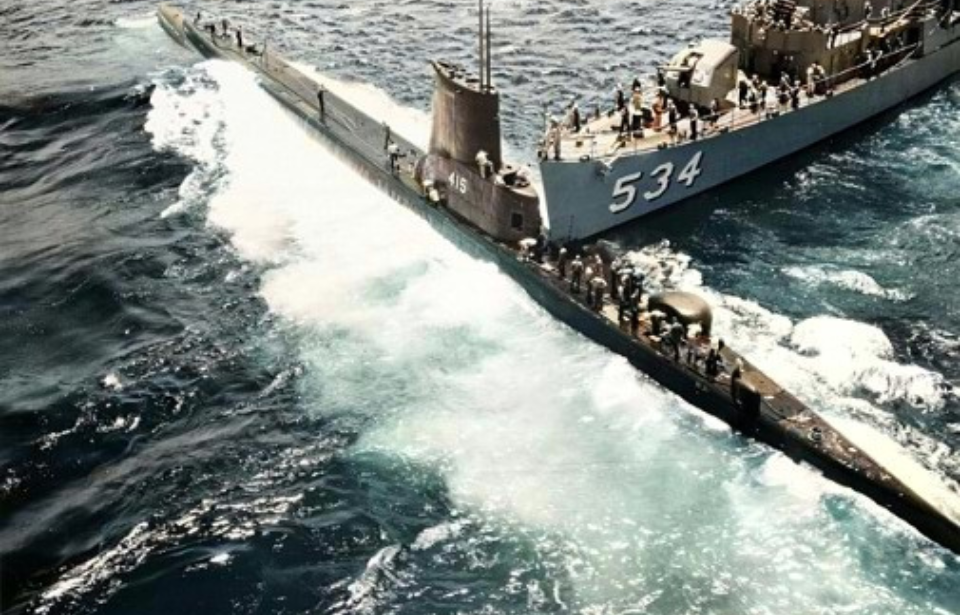On May 28, 1958, the USS Stickleback (SS-415) became the second American submarine lost after World War II. Although she did not engage in combat during the war, this Balao-class submarine began her first patrol on August 6, 1945—the same day the Little Boy bomb was dropped on Hiroshima. She went on to serve in the Korean War from February to July 1952.
Following her wartime service, Stickleback took part in numerous exercises before being lost along with her crew during a training mission.
USS Stickleback (SS-415) following World War II
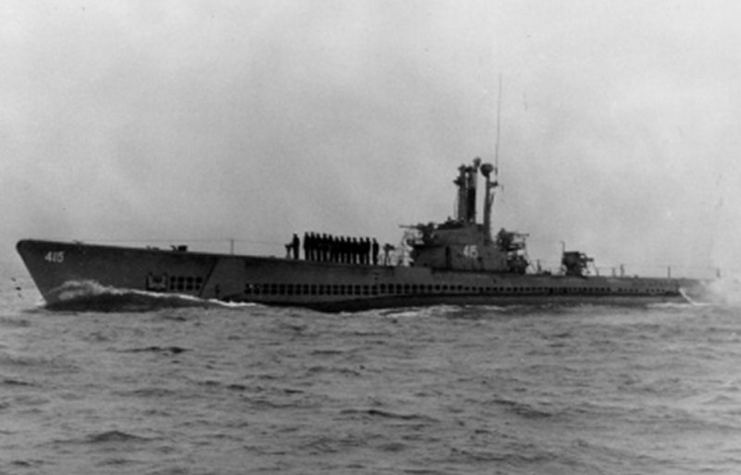
On June 26, 1946, following the Second World War, the USS Stickleback was decommissioned. However, the submarine was recommissioned on September 6, 1946, serving as a training ship out of San Diego. In November 1952, the vessel was sent to Mare Island Naval Shipyard to be converted into a GUPPY IIA-type submarine.
After her conversion, Stickleback joined Submarine Squadron 7 out of Pearl Harbor. Between February-July 1954, she saw service supporting the United Nations (UN) forces in Korea. Following the conflict, the vessel participated in a number of exercises and training missions.
Not-so-routine anti-submarine warfare exercise
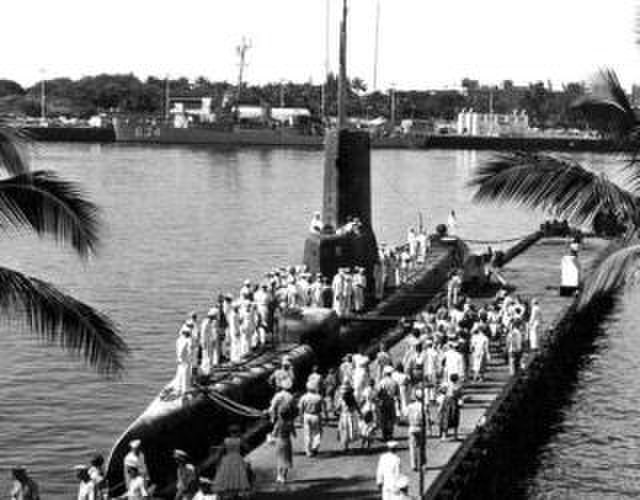
One of these drills, an anti-submarine warfare exercise, had the USS Stickleback working in coordination with the USS Silverstein (DE-534), a John C. Butler-class destroyer escort, and a torpedo retriever off the coast of Oahu, Hawaii.
During the exercise, the Stickleback faced a critical issue. Following a simulated torpedo hit on the Silverstein, the submarine suffered a power failure and began a rapid descent into the Pacific Ocean. Reports show that the submarine plunged to a depth of 800 feet, twice her maximum diving limit.
Crisis averted… for now
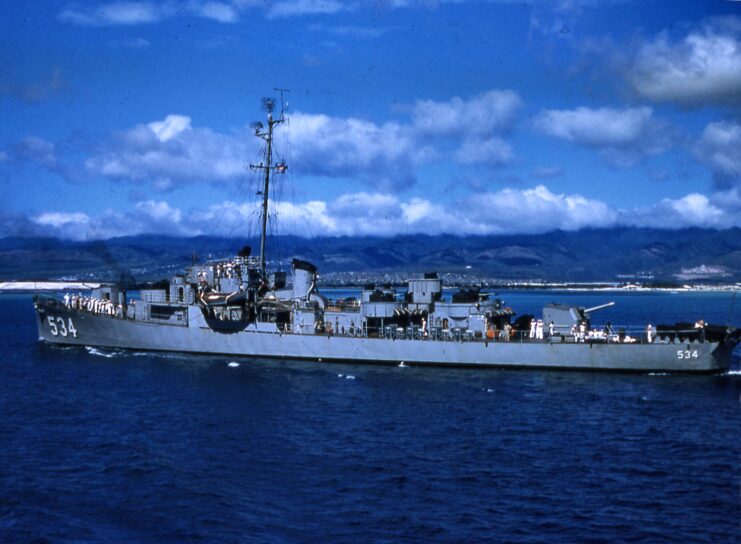
If the crew hadn’t managed to return to the surface, the USS Stickleback would have been overwhelmed by the crushing water pressure. Fortunately, disaster was averted when the submarine released its ballast tanks, enabling it to rise. However, while the threat of being crushed by the ocean was eliminated, a new danger loomed from an unexpected source: the USS Silverstein.
Upon reaching the surface, the Stickleback found itself directly in the path of the Silverstein. In an attempt to avoid a collision, the Silverstein’s engines were reversed, and the rudder was sharply turned left. Despite these swift actions, the Silverstein struck Stickleback’s port side, causing a serious breach.
Disaster strikes the USS Stickleback (SS-415)
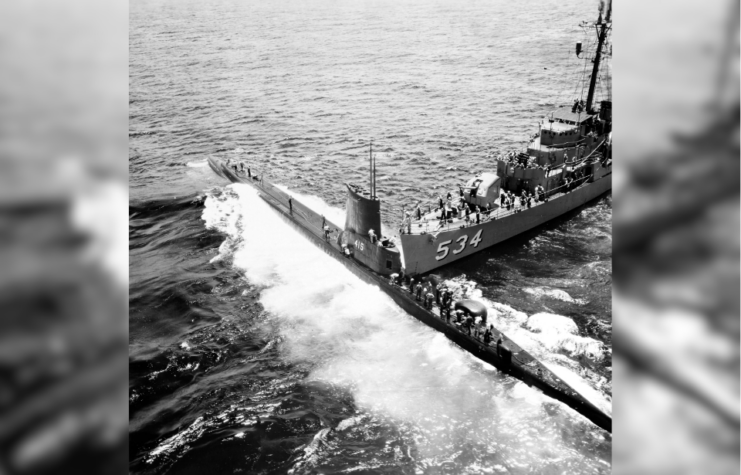
The USS Stickleback began taking on water. With little they could do, the 82 crewmen aboard were transferred to the torpedo retrieval ship involved in the exercise. Attempts to save the vessel involved the USS Silverstein, along with the USS Sturtevant (DE-239), Sabalo (SS-302) and Greenlet (ASR-10), securing lines around her.
Despite their efforts, the submarine continued to flood. At 6:57 PM on May 29, it was reported that Stickleback “sank in 1,800 fathoms of water.” Just a month later, she was removed from the Naval Register.
Discovering a wreck at the bottom of the ocean
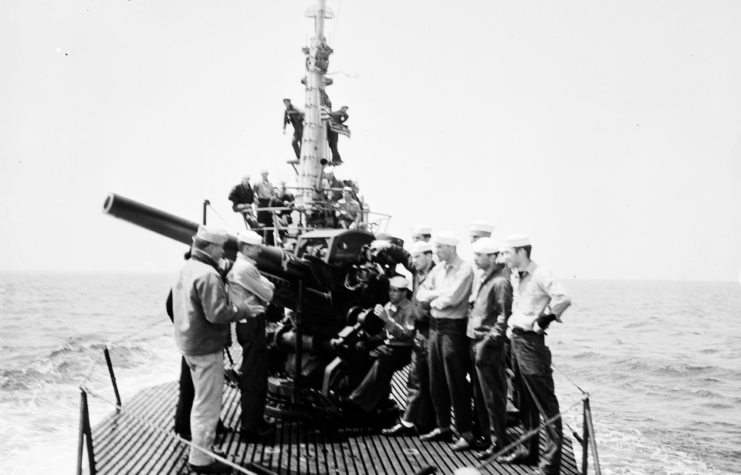
In 2020, the Lost 52 Project, a private company dedicated to locating all American submarines lost during World War II and the four that sunk during the Cold War, began a search for the USS Stickleback. This marked the company’s sixth discovery, achieved through the use of sonar-based imagery and robotics technology.
Are you a fan of all things ships and submarines? If so, subscribe to our Daily Warships newsletter!
Bob Neyland, head of the Naval History and Heritage Command’s Underwater Archaeology Branch, stated Stickleback‘s discovery provided “an opportunity to remember and honor the service of our sailors and marines.”
